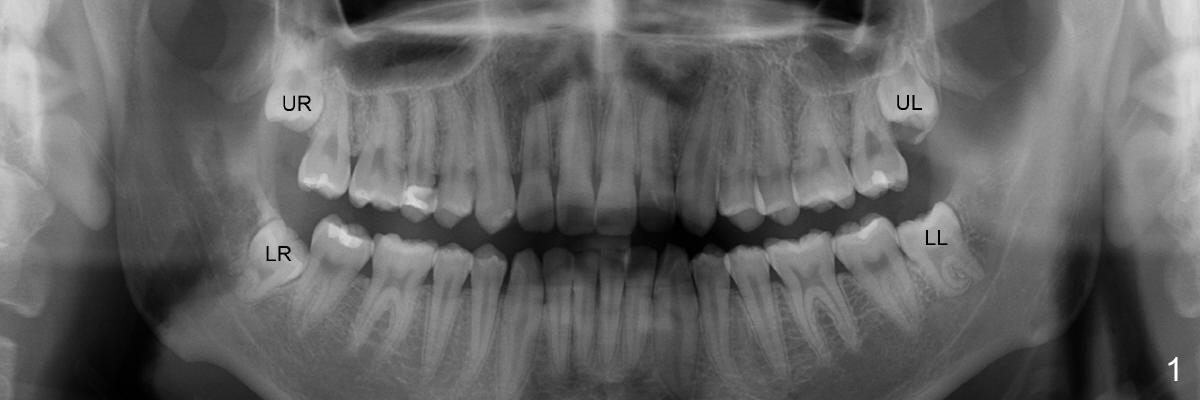
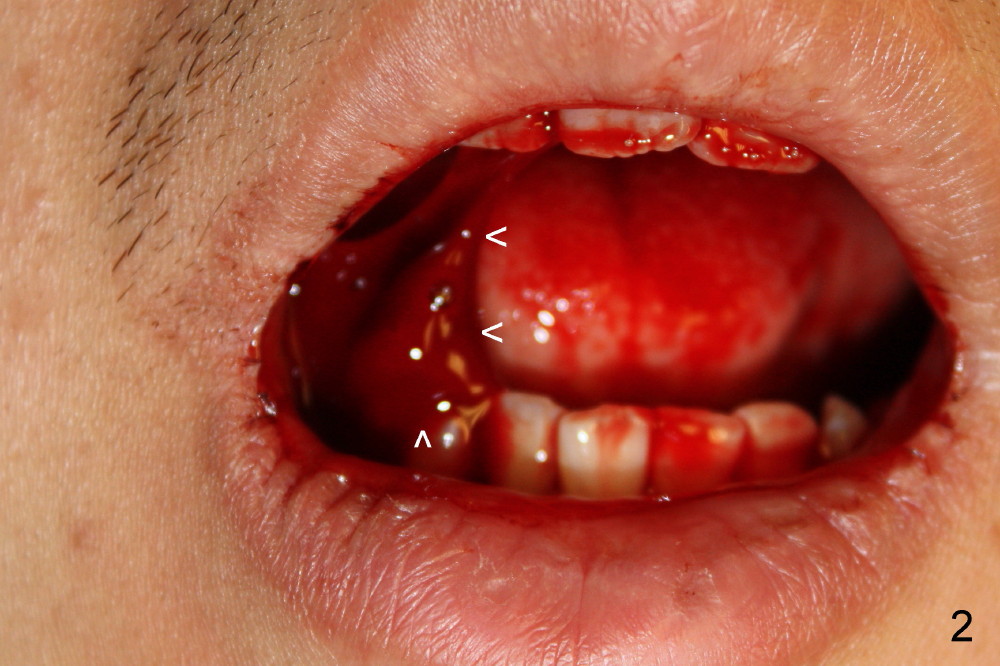
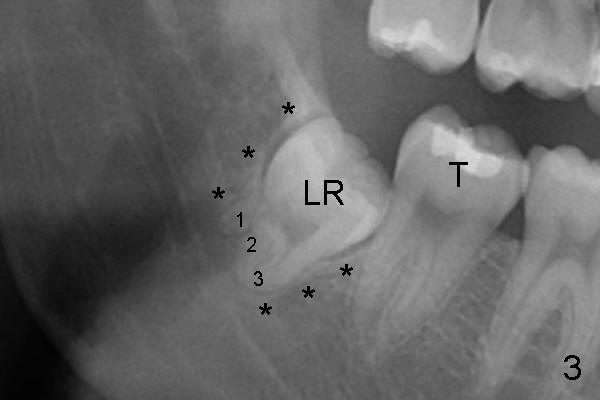
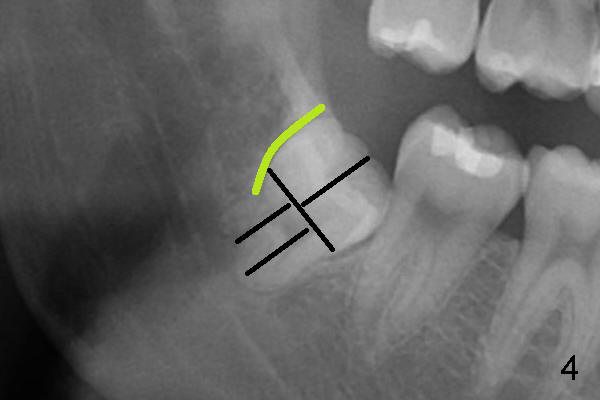
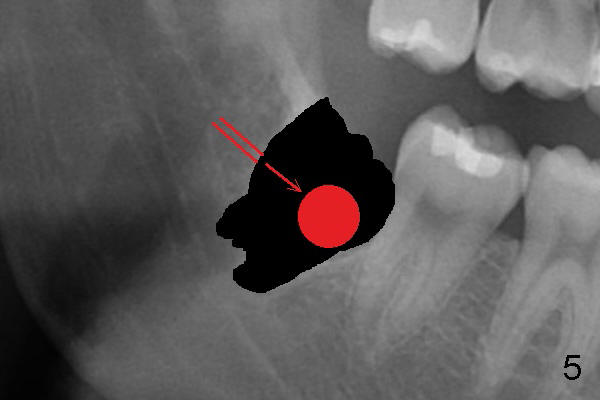
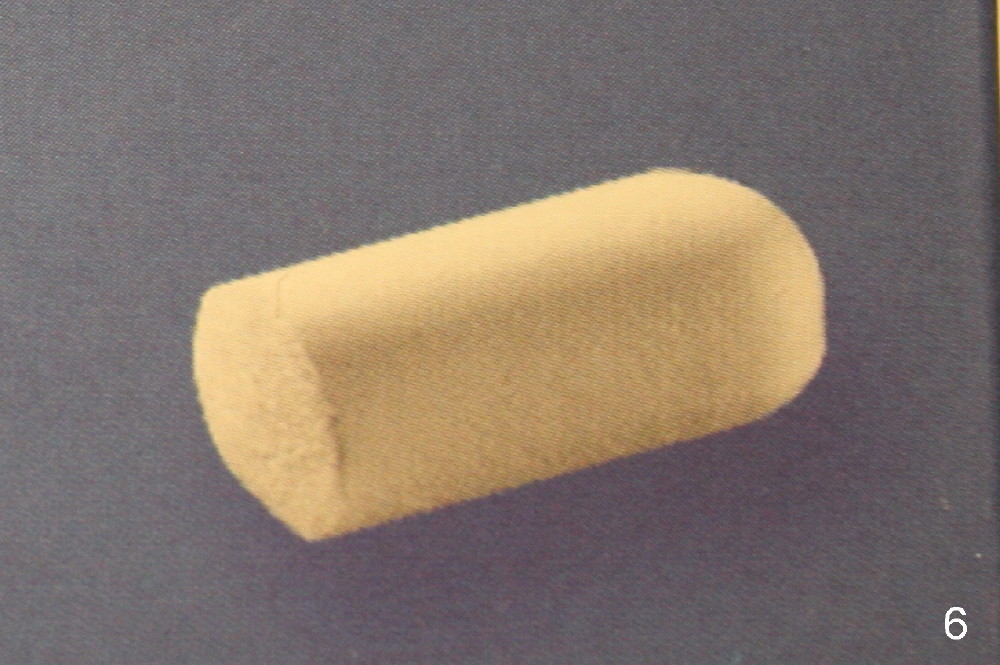
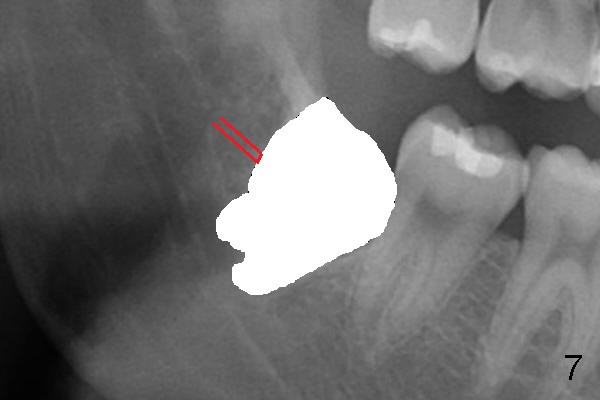
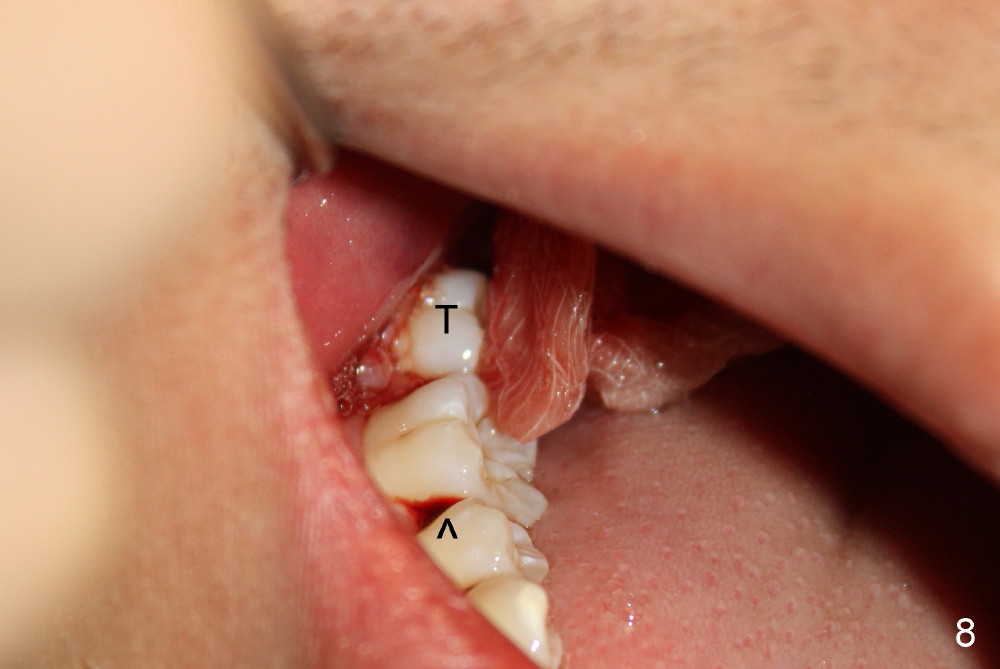
 |
 |
|
 |
 |
 |
 |
 |
 |
Bleeding After Extraction
Bleeding after extraction can be normal (small amount) or abnormal (large amount). The latter should be handled in time. William is 22 years old. He has had pain of wisdom teeth for a few times and agrees to have four of them extracted (Fig.1: UR, UL, LL, and LR). There is a lot of bleeding from the lower right (LR) socket after extraction (Fig.2). When our mouth has a lot of bleeding, it looks like a liver (dark red). This is not normal and requires immediate attention.
The LR wisdom tooth is quite complicated (Fig.3: part of Fig.1). It is lower than the neighboring tooth (T) and is surrounded by bone (*). There are 3 roots (1,2,3).
In order for it to be removed, it is cut into several pieces (Fig.4: black lines). Part of bone surrounding it is also removed (green curved line).
In order for it to be removed, it is cut into several pieces (Fig.4: black lines). Part of bone surrounding it is also removed (green curved line).
As the source of bleeding is identified, bleeding stopping gauzes (Fig.6) are inserted into the socket tightly (Fig.7 white area). The pressure closes the bleeding vessel (red lines with cross line). The gauzes will be resorbed (gone away) by itself.
Very soon the bleeding stops (Fig.8). Trace (or streak) of blood in William's mouth is normal (<). It does not need medical treatment.
Return to Kid,
Senior Dental Care
Xin Wei, DDS, PhD, MS 1st edition 10/30/2014, last revision 01/08/2015